Key Takeaways
- Common hiding spots for alcohol include personal items, vehicles, and obscure areas within homes.
- Concealing alcohol in personal belongings and domestic environments is a behavioral red flag that could indicate a potential alcohol use disorder.
- Deception is a key aspect of hiding alcohol use. This may lead to strained relationships and complicate the detection of alcohol misuse.
- Concealed alcohol consumption poses significant health risks, including liver cirrhosis, cardiovascular diseases, and mental health issues from unchecked alcohol use disorder.
- Identifying signs of hidden alcohol use is crucial for timely intervention and support.
- Effective interventions for covert alcohol consumption include psychological therapies, support groups, and professional treatment programs.
- Friends and family can support recovery by helping their loved one seek out addiction resources and not enable their unhealthy drinking behaviors.
Common Hiding Spots for Alcohol
Understanding where individuals commonly conceal alcohol can provide insights into the patterns of secretive alcohol consumption. People often feel compelled to hide alcohol due to societal pressures, self-judgment, or as part of a pattern of addiction. These hiding places range from personal items to obscure areas within living spaces.
- In disguised containers: Water bottles, flasks, and ice or tea containers are frequently used to hide alcohol.
- Personal items: Gym bags, old clothes, or suitcases can also hide alcohol.
- In the car: Glove compartments, trunks, underneath seats, and even spare tire compartments serve as common stashing spots.
- In the home: Alcohol is often concealed in food containers, behind books, in closets, within couch or chair cushions, or in the attic or garage.
- In the bathroom: Locations include the toilet tank, behind toiletries, or inside cleaning supply containers. Mouthwash and shampoo bottles are also common places to stash alcohol.
- Outside: Outdoor locations for hiding alcohol include garden/tool sheds and camping equipment. Alcohol could also be buried in the ground and concealed by a stone or lawn decoration.
The act of hiding alcohol is a significant behavioral red flag that may indicate an underlying alcohol use disorder. It reflects the lengths to which individuals will go to conceal their consumption from friends, family, and colleagues, often leading to strained relationships and a host of health risks. Recognizing these hiding places can be the first step in identifying secretive drinking behaviors and offering appropriate support or intervention.
The Psychology of Concealing Alcohol Use
The act of hiding alcohol consumption is deeply intertwined with deception, a complex psychological behavior that involves lying, manipulation, and, often, self-deception. The very nature of alcohol’s effects can promote a deceptive environment, making it challenging for individuals to recognize the severity of their situation and for others to penetrate the guise of normalcy that those hiding their drinking may present.
According to research, the use of deception is a crucial component in hiding addictive behaviors. It is a protective mechanism, allowing individuals to maintain their habits without facing immediate social or economic consequences. However, this deceptive behavior can perpetuate a cycle of addiction. Individuals often try to hide their actual consumption levels, making it difficult to recognize the issue.
This Season, Give Yourself the Gift of a Fresh Start.
Whether you are struggling with addiction, mental health or both, our expert team is here to guide you every step of the way. Don’t wait— reach out today to take the first step toward taking control of your life.
Deception in alcohol use is not just an external expression but also an internal struggle. Individuals may deceive themselves about the extent of their drinking and its impacts. This can delay getting help and worsen health outcomes.
The complexities of deception in hiding alcohol use underscore the need for a nuanced understanding of the psychological patterns that drive such behavior, as well as the development of effective strategies to address it both personally and within public health paradigms.
Risks and Consequences of Concealed Alcohol Consumption
The act of concealing alcohol consumption can be indicative of deeper issues, such as potential alcohol use disorders, and carries significant risks and consequences.
Strained Relationships Due to Concealed Alcohol Use
Concealing alcohol use can have profound and detrimental effects on personal relationships, often resulting in trust issues, conflict, and potential isolation.
- Deception: When an individual hides their alcohol consumption, it can create a web of deception, leading to mistrust and damage to the foundation of relationships. This deception can make individuals with AUD appear unrecognizable to their partners, friends, and family. Loved ones may struggle to reconcile the changes in personality and behavior that come with addiction.
- Isolation: Relationships are further compromised when individuals avoid social interactions to either consume alcohol or hide their addiction. This can lead to isolation from family and friends. Isolation can manifest as avoiding family gatherings, social events, or any situation where alcohol use might be exposed or challenged.
- Money problems: The financial strain of prioritizing alcohol over family needs is another dimension of how hidden alcohol use can erode trust and stability in a relationship.
- Intimate partner violence: In more severe scenarios, hidden alcohol use can escalate to physical violence and abuse, as alcohol impairs decision-making and increases the likelihood of aggressive behavior. The risk of intimate partner violence (IPV) and other forms of domestic abuse is elevated, which can have lasting psychological and physical impacts on all involved.
Recognizing the signs of hidden alcohol use is critical for addressing the issue and seeking help. The interconnectedness of relationships, emotions, and alcohol use is complex. However, understanding these connections is essential for maintaining healthy relationships and ensuring the well-being of both the individual with AUD and their loved ones.
Health Risks of Hidden Alcohol Consumption
Hidden alcohol consumption carries significant health risks that can have both immediate and long-lasting impacts.
- Alcohol is known to be a major risk factor for various diseases and injuries, affecting more than 200 disease and injury outcomes. One of the most serious conditions associated with alcohol misuse is liver cirrhosis, which accounts for approximately half of the liver cirrhosis morbidity and mortality rates.
- Even moderate alcohol consumption can have negative health consequences. As reported by The New York Times, recent research suggests that any level of alcohol intake can be harmful, disputing the notion that moderate drinking may be beneficial for health.
- Findings from the Centers for Disease Control and Prevention (CDC) show that excessive alcohol use led to over 140,000 deaths annually in the US from 2015 to 2019, with an average of 26 years of life lost per individual.
- Alcohol use during pregnancy is another critical concern, with no amount considered safe. The risks of fetal alcohol spectrum disorders (FASDs) can result in a range of intellectual, physical, and behavioral disabilities.
- The mental health implications of hidden alcohol consumption are also profound, with alcohol being a known contributor to conditions such as depression and anxiety.
If you are struggling with alcohol addiction, we are here for you.
Signs of Concealed Alcohol Consumption
Recognizing the signs of hidden alcohol use is crucial in addressing potential alcohol use disorders (AUD) and providing timely support. Individuals may attempt to disguise their drinking habits due to various psychological, social, or professional reasons, often resulting in subtle yet identifiable behaviors and patterns.
- Changes in behavior, such as increased secrecy, avoidance of social interactions, or unexplained absences, can be indicative of hidden alcohol use.
- Physical evidence, like discovering alcohol in unusual places or noticing that someone frequently carries containers that could be used to conceal alcohol, is a significant red flag.
- Signs of withdrawal, including anxiety, agitation, nausea, or tremors, suggest that an individual may be dependent on alcohol.
- Observing a higher tolerance to alcohol, where more substantial amounts are required to achieve the same effect, can be a telltale sign of an evolving AUD.
- Behavioral changes such as mood swings, irritability, or a decline in work or academic performance can also hint at alcohol misuse.
- Physical symptoms like persistent indigestion, bloating, or changes in appearance may indicate excessive alcohol consumption.
It’s important to approach the subject with empathy and concern rather than judgment. Encouraging the individual to seek professional help, such as speaking with a primary care doctor or therapist, can be a constructive first step. For those in need, support groups and rehabilitation programs offer structured pathways towards recovery.
Effective Interventions for Covert Alcohol Consumption
Hiding alcohol consumption is a complex issue that requires careful, compassionate intervention strategies. Effective interventions include a spectrum of psychological therapies and support systems tailored to the individual’s needs.
- Psychotherapy and counseling: According to the National Center for Biotechnology Information, psychological therapies such as cognitive behavioral therapy (CBT), motivational interviewing, and relapse prevention are crucial in treating alcohol misuse. These therapies aid in developing coping and social skills, as well as improving motivation for change.
- Brief interventions: These interventions aim to reduce drinking to low-risk levels rather than enforcing abstinence. This helps in lessening overall alcohol consumption and mitigating binge drinking practices, which can lead to chronic health issues. The National Center for Biotechnology Information highlights the effectiveness of these interventions in reducing self-reported alcohol use when compared to minimal or no follow-up treatment.
- Mutual support groups: Groups like Alcoholics Anonymous and SMART Recovery provide peer support and can be as effective as traditional 12-step programs, especially when participants are actively involved. Health professionals can facilitate deeper engagement in these groups through clinical interventions, enhancing the likelihood of successful abstinence. The National Institute on Alcohol Abuse and Alcoholism recommends considering the individual’s involvement level in mutual help groups when evaluating the effectiveness of these interventions.
- Inpatient rehab: Residential treatment programs may be used in severe cases. Inpatient centers have a team of professionals who provide comprehensive care. These programs are designed to address the full spectrum of an individual’s needs, from medical treatment to psychotherapeutic support.
Help Is Available When You’re Ready
Getting help for alcoholism at The Recovery Village Columbus can greatly improve the chances of overcoming alcohol addiction. The center’s team of professionals works closely with each patient to create and continuously adjust treatment plans that ensure long-term success. The Recovery Village Columbus offers several treatment options, including medical detox, inpatient rehab, and more, to provide you with personalized care at our Joint Commission-accredited facility. Contact a Recovery Advocate today to take the first step toward living an alcohol-free life.








